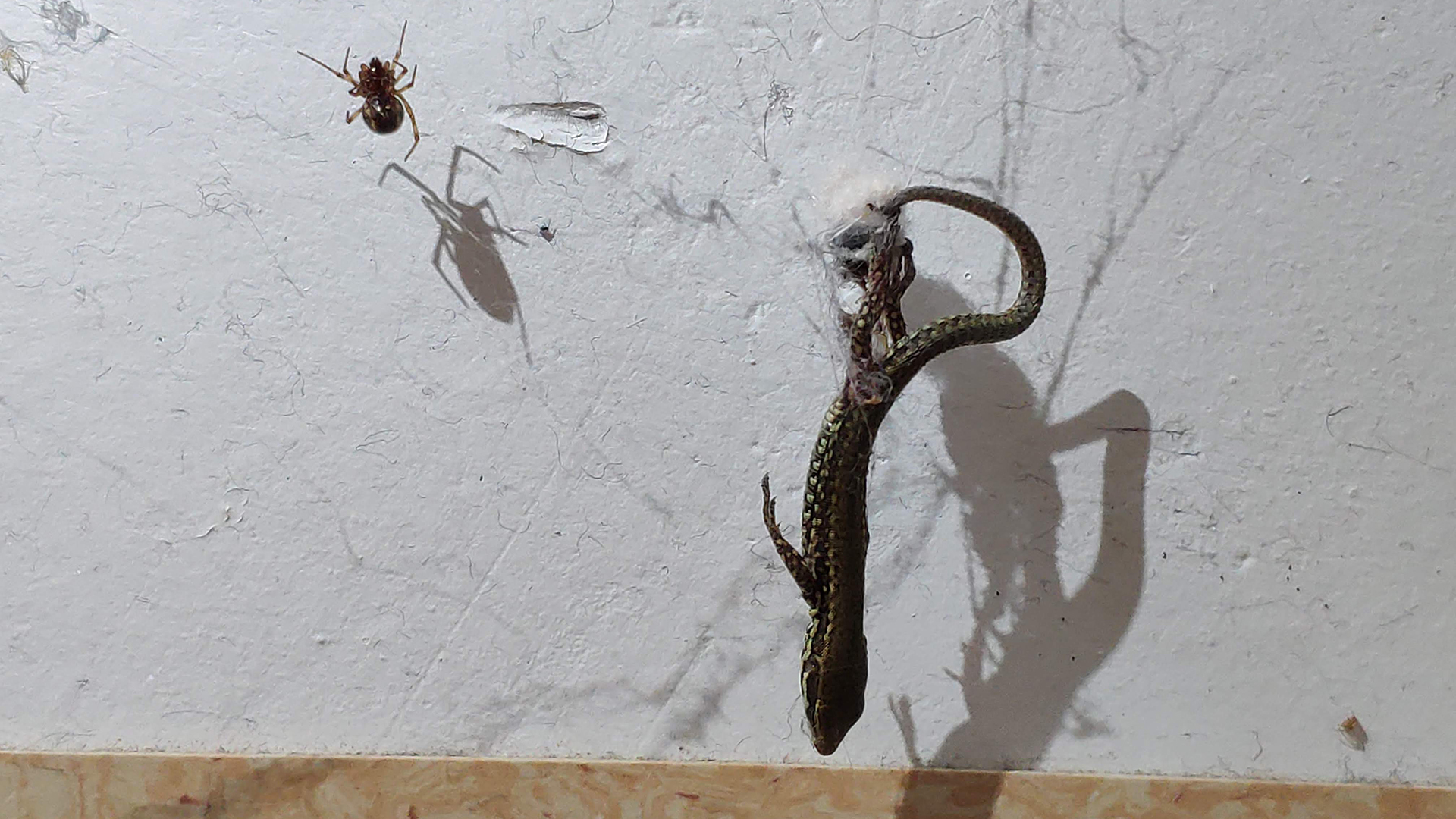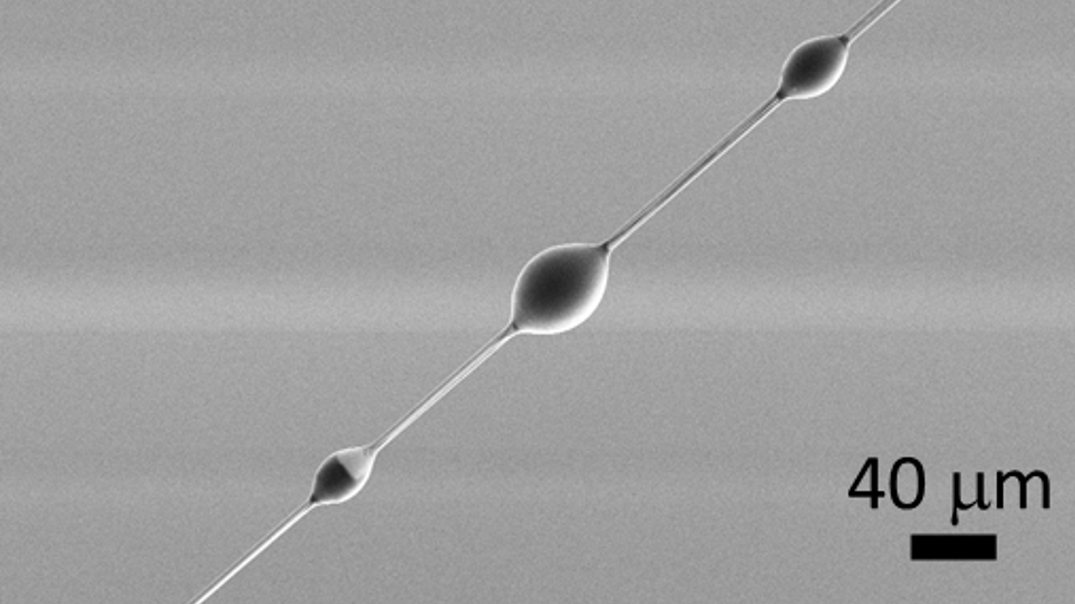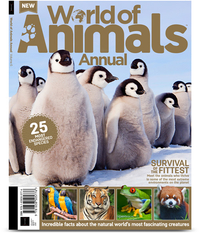Spiders hoist big prey with silk 'pulleys' — and now scientists know how
Energy stored in stretched silk strands lend spiders super lifting powers.

Tangle-web spiders are eight-legged engineers, crafting silk pulleys to snag oversized prey like lizards or even small mammals walking on the ground below.
Until now, scientists didn't know exactly how the arachnids were able to capture such hefty victims. For the first time, researchers analyzed the spiders' building techniques and silk construction for trapping and lifting heavy animals.
Turns out, the spiders actively "tuned" their silk mechanisms once the prey was caught, attaching pre-stretched threads in pulleys to maximize their lifting power and elevate prey much heavier than the arachnids themselves, the researchers reported in a new study.
Related: 21 totally sweet spider superlatives
Spider silk is very good at dispersing energy; when an insect flies into a web, energy from its struggles gets absorbed and dissipated through the network of joined threads. The silk is also elastic, which enables it to store and amplify energy, much like the string on a bow that's pulled taut and then released to shoot an arrow.
For the study, scientists questioned how tangle-web spiders might use the elastic in silk to do their heavy lifting, whenever their sticky trapping threads caught something too cumbersome for the spider to haul up from the ground.
There are more than 2,200 described species of tangle-web spiders (also called cobweb weavers) in the family Theridiidae. They live around the world and are known for their dense, irregularly-shaped webs, according to the biodiversity database Encyclopedia of Life (EOL). For the researchers' experiments, they worked with two tangle-web species — Steatoda paykulliana and Steatoda triangulosa — and tasked the spiders with lifting live orange-spotted roaches (Blaptica dubia). The spiders weighed 0.007 ounces (0.22 grams) at most, and the heaviest roaches weighed nearly three times that at 0.02 ounces (0.56 g).
Sign up for the Live Science daily newsletter now
Get the world’s most fascinating discoveries delivered straight to your inbox.
World of Animals Annual: $22.99 at Magazines Direct
The animal kingdom is a fascinating, beautiful and complex world, but it faces an uncertain future. In the past few years, we’ve seen Japan resume whaling and scientists warn that the next decade could prove pivotal for the Earth’s environment and its inhabitants. This annual explores some of the threats faced by 25 of the world’s most endangered creatures and meets the animals that owe their continued existence to the vital Endangered Species Act of 1973.

"The trap changes"
In the experiments, the scientists observed the spiders as they built their snares, dangling special fibers studded with sticky glue to both ensnare prey and signal to the spider when something was caught. If the unlucky victim is a small insect, that one thread may be enough to lift it up, said lead study author Gabriele Greco, a postdoctoral researcher with the Laboratory of Bio-inspired, Bionic, Nano, MetaMaterials Mechanics at the University of Trento in Italy.
But if the prey is too big for the spider to yank up using the power of its own legs, "this is when the trap changes," Greco told Live Science. "The spider is getting involved, too."
No longer a passive observer, the spider then starts producing hypertension threads — silk fibers that the spider stretches as it anchors one end to the web and attaches the other to the trapped prey. When the threads relax, they release their stored energy to incrementally raise the animal's weight, and the spider does this over and over again until the prey is at the desired height, Greco explained. In the experiments, the spiders hefted the heavy roaches as high as 3 inches (8 centimeters) off the ground, and their fastest lifting speed was about 0.004 inches (0.01 cm) per second, the researchers reported.
The study authors also described four different types of silk that the spiders used to construct the web, each with a specific function. There were two types of supporting threads, each produced by a different gland; "trapping" threads, coated with sticky droplets; and finally, a cement-like silk joining the threads together. The spider then produced a fifth type of silk to bind and immobilize its prey, Greco said.
"The spider is a perfect factory of silk, it produces multifunctional materials in less than milliseconds — at least five different materials" he added.
Another type of arachnid — the triangle weaver spider (Hyptiotes cavatus) — also takes advantage of silk's ability to store and release energy; it uses its silk to craft stretchy slingshots that launch the spider much farther than it could travel by jumping, Live Science reported in 2019.
But there is much the researchers still don't know about spider silk elasticity, such as how much the silk can relax and stretch again. Calculating this limit would help scientists understand just how far a spider could stretch the tension threads, which also have to withstand the struggles of a captured animal without snapping or going limp.
"These were just the first insights in this direction," Greco said.
The findings were published online Feb. 3 in the Journal of the Royal Society Interface.
Originally published on Live Science.

Mindy Weisberger is an editor at Scholastic and a former Live Science channel editor and senior writer. She has reported on general science, covering climate change, paleontology, biology and space. Mindy studied film at Columbia University; prior to Live Science she produced, wrote and directed media for the American Museum of Natural History in New York City. Her videos about dinosaurs, astrophysics, biodiversity and evolution appear in museums and science centers worldwide, earning awards such as the CINE Golden Eagle and the Communicator Award of Excellence. Her writing has also appeared in Scientific American, The Washington Post and How It Works Magazine. Her book "Rise of the Zombie Bugs: The Surprising Science of Parasitic Mind Control" will be published in spring 2025 by Johns Hopkins University Press.










